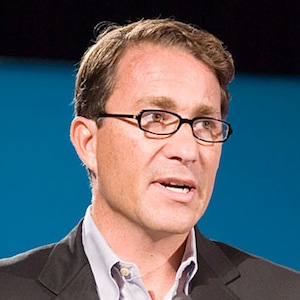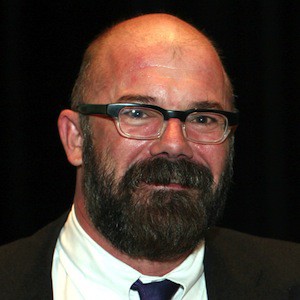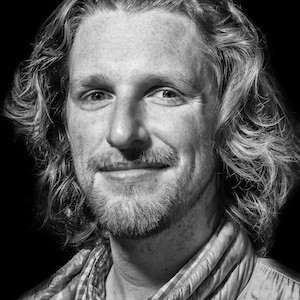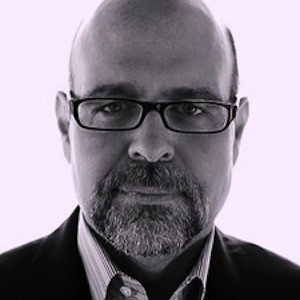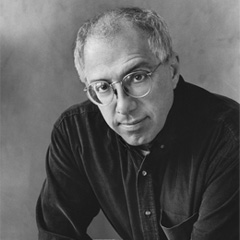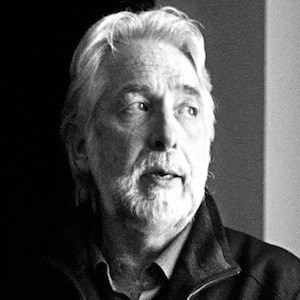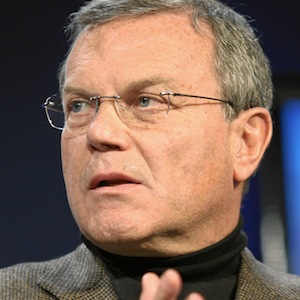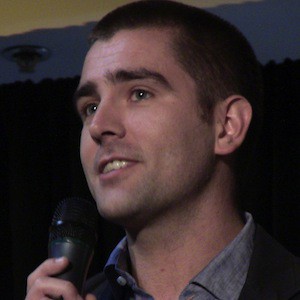Martin: All right. Here we go. Martin Nisenholtz speaking to Om Malik on April 8, 2013 in San Francisco. Can you just give me five minutes worth of background? How did you come to digital journalism?
Om Malik: My first interaction with the web was way back in ’95. I had been playing around with it personally, and I started a personal website with the idea of using it as a hub for aggregating night life activities for people of South Asia, and in learning about the web I realized that my day job would be on the web. I was working for a news writer at that time. Lee K., and I left that job and hounded my future boss at Forbes.com into hiring me for what was going to be Forbes.com’s web presence. I started with them in early ’97, late ’96, early ’97 time frame. That was my entry into the world of digital journalism. We were very early.
Forbes.com was a pretty pioneering project, at that time. A lot of interesting writers came out of it, including my colleague, Adam Penenberg, who broke the Stephen Glass story, and now he teaches at NYU.
That was the early days of the digital journalism for me. But, I was always a believer in the web writing. The more time I spent at Forbes, the more convinced I was that it was the future. Even though I left Forbes and worked for “Red Herring” and later for “Business 2.0,” I always felt that the web was the way to go, even for “Red Herring.”
I wrote for Redherring.com as well, even though it was not part of my job and the same thing with “Business 2.0.” Even though I was just a magazine writer, I was completely writing online, and the reason for that was I believe that online created the necessary speed you needed for technology news. It was just made for technology.
That was my brief history of traditional journalism, but completely obsessed with digital, completely, 100 percent. I always felt that the print just was going to go away, even from the very early days.
Martin: Because of speed?
Om: Because of the speed and the ability to actually to be more interactive and the ability to actually get feedback in real time, and the ability to write as much as necessary. The difference between a paragraph and an ebook, is basically how much you have to say. I think that is something so unique about the web. Any one person with many different styles of writing, can actually succeed, which is very difficult in the print world, right? If you’re a news wire guy, you’ll always be a news wire guy, because that’s what you’re really good at.
If you work for a newspaper like “The New York Times,” like writing “The New York Times” story is your thing. If you write for “Esquire,” or “New Yorker” magazine, you are that guy. It’s like you have a certain style, but the web allows you to go between various different styles of writing. That’s what always drew me to the web.
Also the fact that it was something people frowned upon initially. Being an outsider, I always thought, “Well, if people hate it, this thing is going to be good.”
Martin: You initially start out at Forbes then?
Om: Forbes.com.
Martin: Yeah, at Forbes.com. How long were you there?
Om: About two years.
Martin: What did you learn at Forbes.com?
Om: I learned two things at Forbes.com. I learned the great lesson Jim Michaels used to teach everybody. If you can say it in a thousand words, you can say it in 500. If you can say it in 500, you can do it in 200. That’s the best blogging training anybody can ever get. If you really think about it, all the good bloggers have come out of Forbes from that era. Peter [indecipherable 09:50] is another example. That was the number one lesson. You don’t have to use too many words to actually have a great narrative. The other thing which I learned was to look beyond the obvious, which was when you are looking at a story, don’t look at just one layer underneath it. Look three, four layers underneath it.
That was through…I just picked it up. They don’t teach you that there, but it’s part of the conversation all the time. It doesn’t matter whether you’re on the online side or you are on the offline side of the work, you just picked up that you have to dig deeper, look at angles like three or four [indecipherable 06:31] removed from what you were looking at. Those were two big things I picked up from “Forbes.”
Martin: Did you think about the culture at all when you were there? Was there anything about the “Forbes” culture that was interesting to you at the time? It’s interesting to me that “Forbes” is one of the few magazines that, at the time at least, was really trying to get significantly larger online than it had been. The other magazines seemed not to…well, that’s not true. “Conde Nast” had a significant effort and “Time” was with AOL, so that was a little different.
Om: My view on the culture of “Forbes” was that because of the fact that it was family owned and it was a single property, they were highly focused on finding out what would happen next. I think that’s why they let David [indecipherable 07:27] and his merry band experiment with the web stuff. I don’t think the print people completely bought into it. They, in fact, thought very little of us at the website. Now they come up with a different story, but back then the management, the Forbes brothers, were very open to the idea of what comes next and they were ready to spend money on it.
Martin: You spent two or three years there and then what happens?
Om: I briefly left to go work for H and Q as an investment manager, which turned out to be a bad idea. When banks like H and Q and Venture Funds start hiring journalists to do investments, you know you’re at a market top. Jokes aside, I was there for about eight months. I was miserable. I didn’t really like working there, mostly because I wasn’t working with people who were changing the world. I was not even in the flow of things. There was just a difference between being a part of something which is exciting and something which is boring, so that got to me. I called Jason Pontin over at “Red Herring,” who had been a friend for a very long time and a few other people. They tried to recruit me a few other times already. I called Jason, I think it was in July 2000.
I said, “Jason, I’m miserable. What can I do to get out of here?” He says, “Why don’t you start on July 7th?” I said, “What? That’s it?” There you go. I was working for “Red Herring” and I loved working for “Red Herring.” It was a good training ground for my full immersion into the Silicon Valley culture.
Martin: The timing was auspicious though, if I’m thinking about it correctly, the dot com bust happens, you read how it went from being a telephone book sized magazine to a newsletter within a matter of months, as I recall. I may be wrong about that. Maybe I’m thinking of Industry Standard.
Om: Yeah. That was Industry Standard. “Red Herring” took about three years to die. I still feel that it died less because of the market conditions and more because of bad management. I think it was a very poorly managed company. People who ran it didn’t create a plan for a downturn, real stupid leaders. I could spend days talking about that. The magazine itself was actually putting out a good product to the very end, to the very last issue. In fact, the last issue would have been the 10 year anniversary issue, which is ironic. This perhaps was one of the best issues we had put together with a skeleton staff. Too bad the world didn’t get to see it.
The year I joined, probably after the market topped, but again, if you’re a writer, you just write stories. The market is just work it. When things are going up you write about that, and when things are coming down, you write about that. A very encouraging editor that I had. Even though many of them were my age and young, but still always encouraging me to think different. I think that had a big role in how I eventually became who I am.
Martin: You leave when they go out of business?
Om: Yeah. I literally turned the lights out in the office. Me and Doc [indecipherable 11:33] were the two guys that [indecipherable 11:35] it can’t be found.
Martin: What do you do next?
Om: For about 15 days I tried to do nothing, which is so hard for me. Then I talked to Josh Quittner over at “Business 2.0,” and he said, “Come and work for us,” and that’s what I do.
Martin: Yeah. We had lunch with Josh Quittner last week. He’s at “Flipboard” now.
Om: Yeah. He hired me and another guy, Michael Copeland, and Time Warner bought the mailing list of [indecipherable 12:19] . I went there and I guess this was the next step in my life. Just like people think the worst is happening, and from the worst came the best. I wrote for three years or so. I wrote a lot of articles for them, a lot of cover stories. Some of those cover stories have actually become management practices now, like the lean style startup.
Martin: Now you’re writing for a print magazine.
Om: It was a print magazine, but they also had a website. I would write occasionally for Business 2.0.com, but I also had my personal blog which had actually blown up.
Martin: When did you start the blog?
Om: The blog started in December 2001, as like what it is, like career. Before that it my a repository for my links to my articles and my resume. It’s been around since ’97. I actively started writing in December 2001. There I would write pretty much every second day, or every day.
Martin: Just your thoughts?
Om: Just thoughts. People I would meet in the Valley. Again, I was working for a monthly magazine. I had a lot more to write than most people, because I’m just a daily guy. I like to write five times a day. That’s who I am. I would start my [indecipherable 13:44] in a news wire, so I’m used to writing fast. At this time, because of my background, I was able to become a good blogger/reporter without even trying, because I was blogging, like a traditional blogger with a lot of voice and personal stuff, but I also was reporting, and I was also being able to offer my narrative experiences, like the magazine, things I learned at the magazine, I’d bring them in.
I also learned magazines teach you how to think literally and use the graphics, and pictures. All those things are combined in my head somewhere. Like this happens, like you just learn these things while you’re doing your job. When I turned professional blogger, which was in 2006, all those things came in very handy.
Martin: When you say you turned professional blogger, you left “Business 2.0,” or did it go away as well. I think it went away at some point.
Om: I had left in June 2006, starting GigaOm, the company.
Martin: Why did you do that?
Om: I think it was funny that there were two people who would harangue me every day. One was Ratat Ali at paidContent, and Michael at [indecipherable 15:16] , Michael [15:17] , was like “Great. You are telling us to start blogging, blog based companies, and you yourself are still working for the man”? People gave me enough hard time, but jokes aside.
What had happened was, people kept talking to me on whenever we’d go to parties or events. They would talk to me and say, and they would talk to me from the perspective of what I did on my blog, and not what they read in the magazine. I said, “That makes no sense. The magazine is so much bigger.” I didn’t realize how much bigger the blog had become.
Also when that happened and I went to Toni Schneider, whose Matt’s partner in crime and he said, “What makes you happy. Writing for the magazine or writing for the blog”? That was the answer, so I left to start a company. I could have done…I love Josh, so my loyalty for Josh is completely 100 percent, so leaving him was the hardest thing for me because I really loved working for him.
He probably was, he found the genius in the [indecipherable 16:33] . He would look at things and be like, “Yeah. That’s a story.” Then he would turn that into magical cover story. It was really hard to leave. He was my [indecipherable 16:45], but I had to do it. The world was telling me, my intuition was telling me, that the time for the magazine was coming to an end, and this next wave of journalism, or writing, or content, or information is going to be driven by these real time systems.
Whether it is a blog, or Twitter, or Facebook, it doesn’t matter, but there is the real time nature of these things, which is going to drive the narrative of the future, and that’s exactly why I left.
Martin: Can you talk to me about this so called real time nature, because what we’ve heard continually throughout this process is, not always in conflicting terms, sometimes in complementary ones, but certainly sometimes conflicting ones, that the idea of a more traditionally journalistic process where there are teams of people working to create something and you know, then put it out, versus the individual who is going directly to his audience, not necessarily versus, but you know what I mean, in contrast to is a better way to put it. These are two very different things. One is meant to assure the truthfulness of something; the other is meant more to provide, to use your phrase, the benefit a more real time, more instantaneous view of something, and both have benefits but, both have down sides.
Do you think that’s right, or…?
Om: To some extent yes. The way I see it is information is…The analogy I like to use is that a food. There is many different kind of food, many different ways of preparing food. There is the chef, the slow food way, and there is some art to it, but not everybody can create that. Not every publication can have 10 people working on a single story. Not every publication can hire Malcolm Gladwell. Not every publication can afford to pay David Carr.
My view is that, that is one way of doing things, then there is the blogger way of doing things, which is one man trying to obsessively cover an industry, or a topic, or a subject, and finding all sorts of information about that topic, subject, or person, and then aggregating it on their blog.
That too, to me, is information gathering, just like a reporter in a big city newspaper that does that.
The two are very complementary. I think I’ll use the idea of 21st century reporter, in my opinion is somebody who works for “The Times,” is Brian Stelter, he’s on Twitter. He is blogging, and then he writes a column, which is perfect.
There is never a discontinuity in understanding his view of the industry. That’s a good reporter, in my opinion. That is a prototype. Some of my people, especially some of the people who’ve been with me, for a long time. They’re exactly the same. They write classical journalism, they work with a team, they do a little bit of blogging, and then they tweet. There is a continuity to it.
I think the real time nature of information is important, because we don’t put out just magazines that get distributed. The world is more connected today. Just like television changed our expectation of information, and cable news changed expectation of information, the Internet, too, has change our expectation of information flow.
Mobile is changing it even more. I think there is nothing wrong with it. That’s technology is the inevitable. We just need to do how we do things, adapt them a little differently.
I love reading “The New Yorker,” actually, in paper. I would not like not like to read it on the iPad. I don’t mostly because I am enjoying my Michelin star meal, it’s costing me, not money, it’s costing me my full attention.
I mean, you don’t do that when you have a taco at a taco bar. You’re just like stuffing your face. You have no regard for your body. When you eat at a Michelin star restaurant, you’re enjoying the process, the food. You’re immersing yourself into it.
When you read something in “The New Yorker,” that’s exactly what you’re doing. I cannot wait for Monday to come when David’s column comes out. I read it on the web.
Martin: I think the question, in large part, this history is not looking to answer, but certainly looking to outline is whether in the near term future, the Michelin Star restaurants have viable business models. As willingness to pay on the part of the consumer has been somewhat different on the web than it is in traditional media and the advertising, in particular. That business has changed. The question of whether you can support all of the staff that it takes to build a Michelin Star restaurant is viable, how do you react to that?
Om: I think there are challenges of business model. These are not challenges of the business. The business model has to adjust to the new reality. Can a publication like “The New York Times” afford 5,000 reporters? Probably not. Can they afford a million square foot office in the middle of Manhattan? Probably not. Those days are gone. However, you can right size your business model. You can right size things you do and do them really well. I think there is going to be at least 10 to 20 top publications in each category, whether it’s a newspaper, magazines and even online. Then there will be a lot of other individual means of expression. I think I find many Twitter feeds are more interesting and intelligent than reading some columnists, to be very honest. They’re just short reach [indecipherable 23:47] .
I think the model has to change. I think we have an old industrial idea and business model around news and information. That has to change. Why do we have to have fixed infrastructure? Why do we have to have a fixed idea of what a foreign correspondent is, or a news office is, or a news bureau is. Those ideas have to change drastically. They have changed over a period of time.
The technology allows us to do many new things, as well. You don’t need a lot of expensive Telex systems and all those kind of things anymore. It is a lot of cost savings as well. I do feel that if people put out good product, there will be need for that.
Even today, you see a lot of these tiny startups are popping up which are using the web to write narrative, long form journalism, which is exactly what “The New York Times” does and some of the better publications do. It’s not the idea of long form or good journalism has gone away. It just is adapting your business to it. You have to do it.
Everybody has to do it. We have to do it. We are almost seven years old, now, and as a company we have to change to the ever changing reality of the business.
Martin: It was interesting because Marty Baron, the new editor at the “Post” in Washington, really, I thought, gave a pretty compelling rationale for the need for the kind of investment that the traditional journalistic process takes. He talked about a couple of different things, but in particular the thing he worked on in Boston, the priest scandal, took a lot of time and a lot of sustained effort and a lot of commitment. If “The Globe” didn’t do that it would still be going on or most likely would still be going on. On the other hand, maybe in this world of real time information, you can’t hide anything from anyone. In other words, what was the thing that was ferreting out all of this corruption and all of these problems had to do that more aggressively because there weren’t a million different ways to publish. I’m not sure whether that’s true or not? Do you have a reaction to that?
Om: I do, and I think he’s right. We have to do those kinds of journalism, like we have to. That’s the real reason we do journalism, is to kind of look for things which people don’t want us to write about. “The Times” or the “Washington Post” have the resources to do those kind of things, but they just can’t do them at the scale they used to do it. There’s 50 investigative reporters going on at any given time at a big city newspaper. Or maybe there is five now, instead of 150 reporters dedicated to some investigation, there’s only three or five.
Like what I’m saying is the relatively…But there is other ways of thinking about it right? Like while the “Post” or “The Times” are thinking about it, just add the story or the paper, right? Why isn’t it an ebook, why isn’t it a Kindle single?
Martin: Well it is now in today’s world. To be fair it is. The “Times” has a…
Om: When you are going in to an investigative piece the whole thing has to be end to end. From a tweet, to a book right? You figure out what does the entire ecosystem look like, how much money you can make in the entire eco system. Think differently about the same idea, just use what is at our disposal to do new interesting things. I do feel like there is few people who will just be brilliantly successful like this, a few big publications, and thank God for that.
It would be a shame to see “The New York Times” not do its investigative pieces. Or “Wall Street Journal” not go dig deeper into companies. Because then, who else will? These things do need time and patience. I don’t expect that from any of the traditional business magazines now. We try and do as much as we can with our limited resources.
The ideologies are still there. We just are more cognizant of the world we live in. We are more aware of the business model we are competing with. I think that’s just what it is. I’m still positive of our information ecosystem.
I’m still excited about media. In fact, last year we bought paid content on that premise. That the renaissance in media is going to happen. It’s going to happen relatively soon. All these new devices, these new mediums of distribution and consumption, mean new opportunities. We just don’t know what those opportunities are. I think that’s what makes it such a great time to be experimenting.
That’s how I feel. I’m an optimist from that standpoint.

